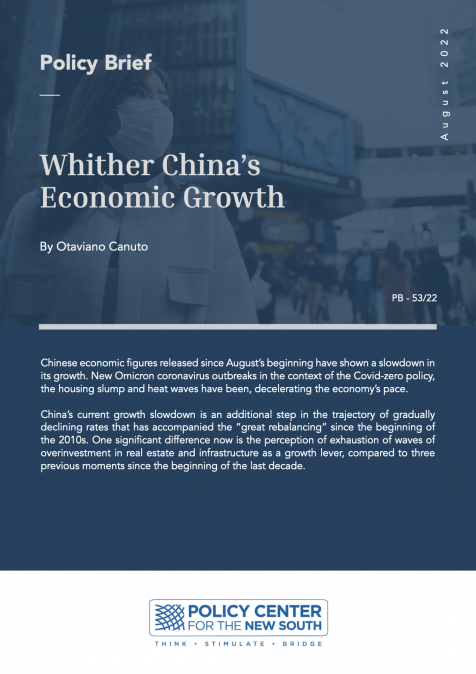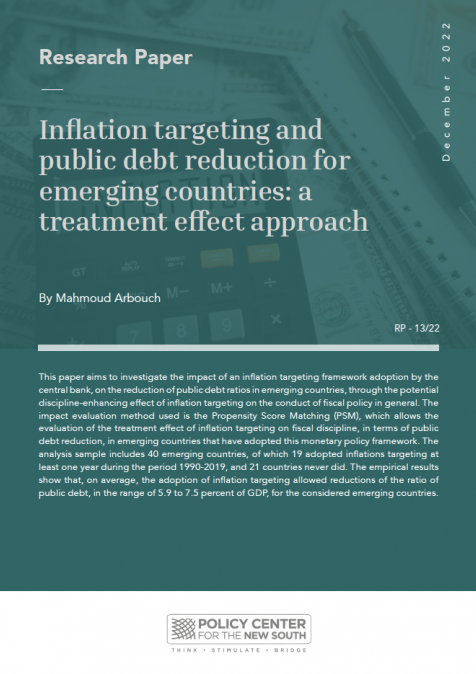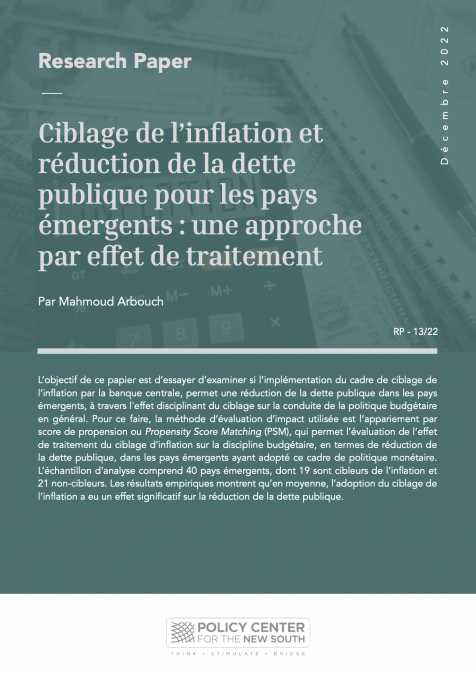Publications /
Policy Brief
Policy Brief
Whither China’s Economic Growth
August 24, 2022
Chinese economic figures released since August’s beginning have shown a slowdown in its growth. New Omicron coronavirus outbreaks in the context of the Covid-zero policy, the housing slump and heat waves have been, decelerating the economy’s pace.
China’s current growth slowdown is an additional step in the trajectory of gradually declining rates that has accompanied the “great rebalancing” since the beginning of the 2010s. One significant difference now is the perception of exhaustion of waves of overinvestment in real estate and infrastructure as a growth lever, compared to three previous moments since the beginning of the last decade.








